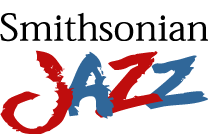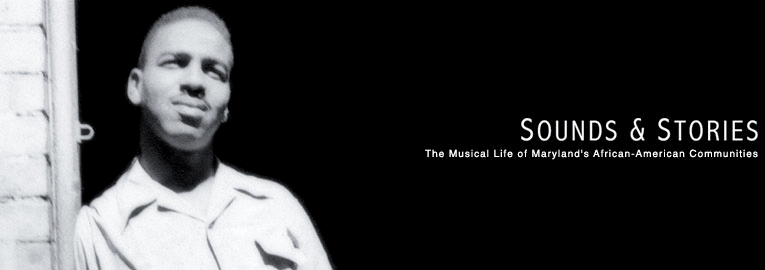
JAZZ TEACHERS DCTM
Links to the history of jazz in DC and places that are dedicated to the legacy and preservation of jazz. Click on the images to read more about these exciting projects and institutions located in Washington DC.
The Kennedy Center's free digital resource for teaching and learning.
The Black Broadway on U: A Transmedia Project sheds light on the social impact, historical and cultural influence of D.C.’s greater Black U Street/Shaw community once affectionately known as the “Black Broadway” (a phrase coined by the late entertainer, Pearl Bailey who jumpstarted her singing career on U Street) from the early 1900s to late 1950s.
George Washington University's Special Collections Research Center and Africana Studies Program are partnering with five partner archives throughout the city to enhance access to previously unavailable research materials that document the history of the African diaspora in DC, the civil rights movements, the struggle for Home Rule, the rise of Black-owned businesses, the development of Howard University, slavery in the nation’s capital, jazz music in D.C., and the literary arts.
Felix Grant’s distinctive voice was heard in Washington, D.C., for more than 45 years. He began his brilliant career on radio station WWDC-AM in 1945.
Historic U Street: For a period of time after the Civil War, more and more freedmen came to Washington. As their numbers increased among the black bourgeoisie in the city, racial tolerance decreased. This lack of tolerance left the U Street community, including its businesses, increasingly more segregated from white Washington. Black business people decided to go it alone as they began their own black business movement. The hub of this effort was in the U Street neighborhood.
Martin Luther King Jr. Memorial Library - Central Library. Help us tell the story of Washington D.C. 's famed U Street, once known as "Black Broadway" and become a part of the Washingtoniana Community Archive!
From posters and photographs to film and sound recordings, the National Archives has a remarkable collection of jazz-related records that trace its influence throughout American history. Drawing from these records, the National Archives Museum and the Foundation for the National Archives are proud to present a programming series about the history of jazz.
About the National Jukebox:
The Library of Congress presents the National Jukebox, which makes historical sound recordings available to the public free of charge. The Jukebox includes recordings from the extraordinary collections of the Library of Congress Packard Campus for Audio Visual Conservation and other contributing libraries and archives.
In 2007, NMAAHC and Smithsonian Folkways Recordings began a multi-year collaboration to explore African American oral and musical traditions. The African American Legacy Series will include reissues and compilations drawn from the Folkways catalog, plus previously unreleased archival materials and new recordings of contemporary artists.
The Eubie Blake National Jazz Institute and Cultural Center brings artists and audiences from diverse backgrounds together. We support, develop, promote and advocate for cultural and educational programming in the visual and performing arts.
Jazz Encounters: Jazz Live Studio Sessions was created by Michael Bailey a multimedia specialist, and musician/composer with over 30 years of experience in the communications industry and arts management. In 2014, Michael noticed very little jazz music programming on PBS, cable and other television networks. He realized without television exposure this uniquely African American art form could be forgotten. In July of that year he began taping musicians in Studio A at Montgomery Community Media.
These transcriptions of oral histories of NEA Jazz Masters are part of the Smithsonian Jazz Oral History Program. Established by the Smithsonian's National Museum of American History in 1992, the Program seized the opportunity to document more than one hundred senior jazz musicians, performers, relatives, and business associates. Each interview was conducted by a jazz authority and was recorded on digital audiotape by a professional audio engineer. T
Friedheim Music Library: Sounds and Stories began as a joint project between the Peabody Archives, the Musicology Department of the Peabody Conservatory and the History Department of the School of Arts and Sciences at Johns Hopkins University. In the fall of 2002 a seminar of 18 students undertook to interview people who had participated and still participate in the music of Baltimore’s Black community, to record their memories, and to document their world and their legacy. Grants from the Maryland Historical Trust and the Maryland Humanities Council made it possible for the interviews to be transcribed immediately.
The music division--formally created in 1896 and established in quarters within the Library's Jefferson Building upon its completion in 1897--traces the origin of its collections to the thirteen books on music literature and theory that were contained in Thomas Jefferson's library, purchased by the Congress in 1815. At that time, the cultivation and development of a music library were scarcely matters of great importance. By the closing years of the century, however, some 400,000 music items had been added to the Library's collections, largely effected through the deposits under the Copyright Act.
Smithsonian Folkways Recordings is the nonprofit record label of the Smithsonian Institution, the national museum of the United States. Our mission is the legacy of Moses Asch, who founded Folkways Records in 1948 to document "people's music," spoken word, instruction, and sounds from around the world. The Smithsonian acquired Folkways from the Asch estate in 1987, and Smithsonian Folkways Recordings has continued the Folkways commitment to cultural diversity, education, increased understanding, and lively engagement with the world of sound.
In 1990 the U.S. Congress, recognizing the importance of jazz in American culture, authorized the establishment of the Smithsonian Jazz Masterworks Orchestra (SJMO) as the orchestra-in-residence at the Smithsonian's National Museum of American History.















